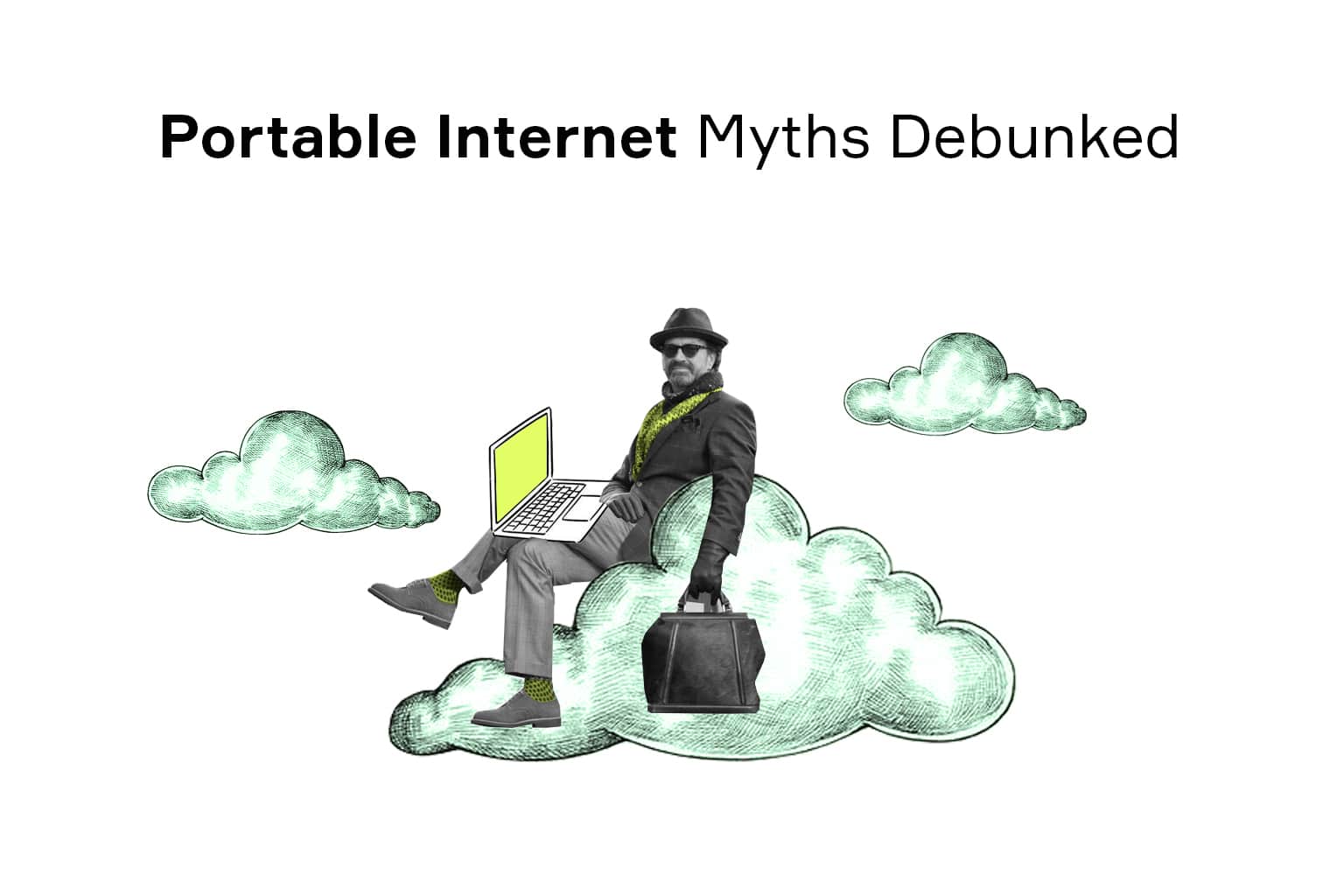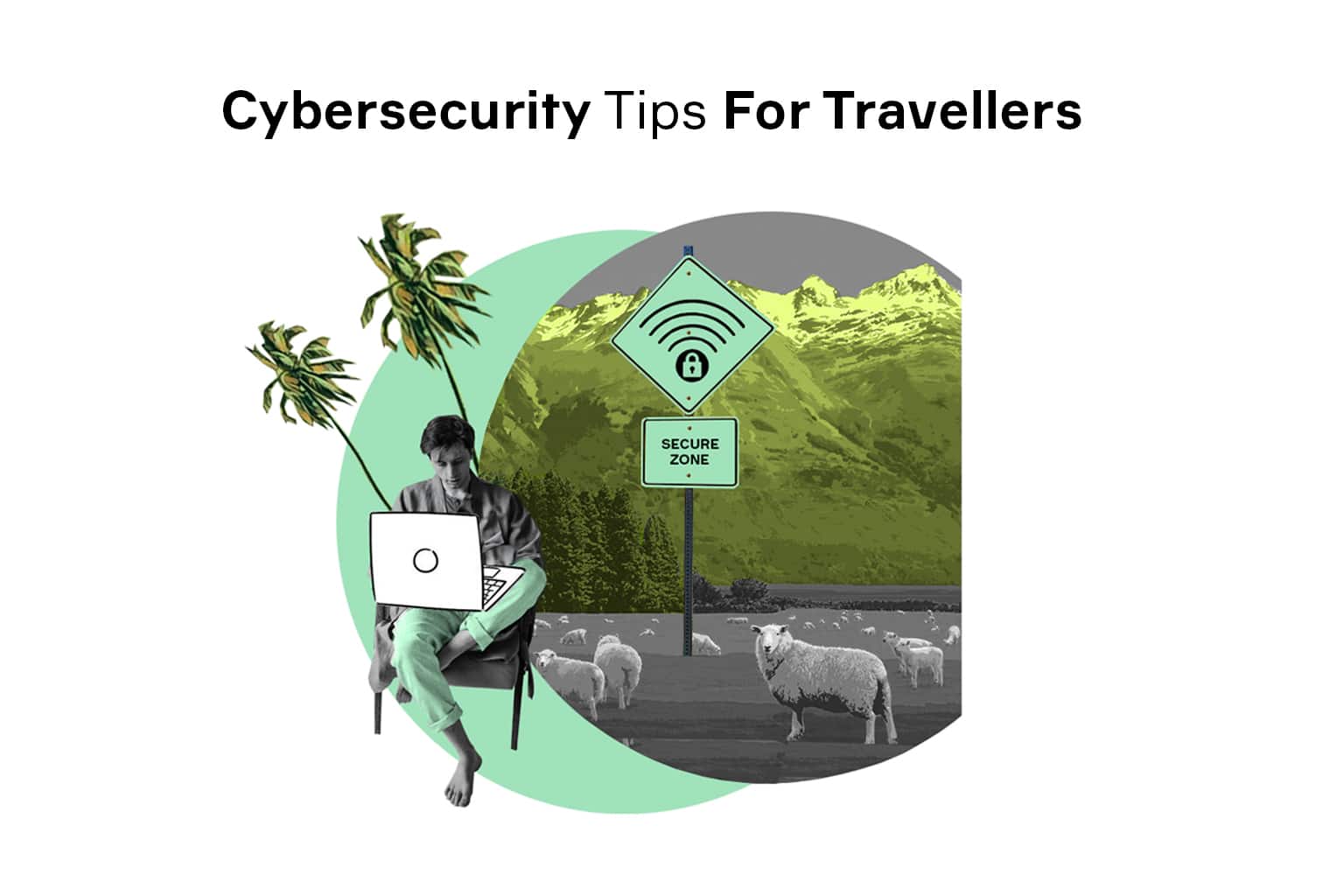
The Internet is perhaps among the most misunderstood technologies used in our daily lives. Nowhere is this more apparent than in the confusion of widespread terms like Internet, Ethernet, WiFi, broadband, and all the comparisons of “wireless vs wired” based on them. To choose the right connectivity solution, you need to understand what those terms actually mean – and what they don’t. To help you out, here is a rundown of the popular misconceptions about various connection options, along with a close look at their strengths and weaknesses.
Internet, Ethernet, WiFi, and Broadband: Figuring Out the Difference
Before we can compare wired internet connection vs wireless, it would make sense to start with the basic terms and concepts. The technology behind global connectivity has a rich and complex history, which makes it more interesting and, as a side effect, more confusing. Here is a primer to make sure we are on the same page.
Internet: The Network
The Internet is probably among those technologies that have shaped our reality as we know it. Everyone is familiar with it, many people use it on a daily basis. Still, few people really understand what exactly it is, judging from questions like “What is the difference between WiFi and Internet?” popping up throughout the web.
The main thing everyone seems to agree upon is that the Internet is a network. This is actually quite close to the truth, which is why its artistic renditions are usually a tangled mess of interconnected colored lines. In reality, it is a system that consists of multiple networks, ranging from local public and business LANs to government and academic WANs spanning across the globe. In other words, it is the technology allowing different networks to communicate and stay accessible to each other at all times.
Probably the most familiar aspect of the Internet is the World Wide Web – a collection of web pages and other information resources interconnected by links, or URLs. While often used interchangeably, the Web is only a subset of the Internet – just the one we are most used to.
Ethernet: The Golden Standard of the Wired Connection
Perhaps the least widespread term on our list, Ethernet is actually a key component of the modern Internet. This is actually an umbrella term for the entire range of technologies that enable networking on any scale, from personal local networks (LANs) to wide area networks (WANs) spanning over enormous distances. Its history dates back to the late 1970s and includes several generations of hardware, with the most widely used ones today being the twisted pair cable and optical fiber.
Despite being a relatively cumbersome and inconvenient option for household use, Ethernet remains the de-facto standard in the industry. On top of that, in some settings, it can be preferred over wireless connection due to its unparalleled reliability and security. Overall, it’s fair to say that Ethernet is the backbone of the Internet infrastructure.
WiFi: Going Wireless

Like Ethernet, WiFi is just a way of delivering the information from the network to your device. The technology has become synonymous with the Internet thanks to the popularity of public WiFi hotspots – free access points in coffee shops, restaurants, airports, and other amenities. However, it has found its applications far outside the domain of Internet access, being featured in:
- Tablets
- Wearables
- Smart gadgets
- Printers
- TVs
- Drones
- Speakers
The important thing to understand about WiFi is that it does not imply Internet connection. Simply put, it’s just a radio substitute for wires, so it can be used for any data exchange, e.g., for streaming video from one device to another within your home network.
Broadband: The Internet Highway
The final piece of the puzzle is broadband, a word you’ll see thrown around a lot when it comes to the Internet connection. However, this term doesn’t have anything to do with the Internet itself. Rather, it refers to the data transfer properties and can be found all over the telecommunication industry. It is essentially used to denote that the communication channel has high throughput, permitting a lot of data to be sent at a high speed.
Interestingly, there are no specifications for broadband, which makes it ideal for making sweeping marketing claims. Basically, it’s the ISP’s way of saying “our connection is really fast,” which is why mobile Internet has been using it for decades.
Wireless VS Wired: Sorting Out the Misconceptions
Now that we’ve covered the basics, let’s go through some tricky questions that pop up all over the Web. By now, you already have enough information to figure out the answers to most of them, in which case treat them as a quiz of sorts.
Do You Need Ethernet for WiFi?
Strictly speaking – no, you don’t, although that depends on what you plan to use WiFi for. As was mentioned above, Ethernet and WiFi are just different methods of connecting devices into a network. Technically, you can connect your laptop, phone, and smart TV to your router over the air, but without an Ethernet connection, they will only be able to communicate with each other. A notable exception is a 4G USB modem, which gets online over a mobile network and distributes the signal over WiFi, bypassing the Ethernet connection altogether.
Do I Need an Internet Provider to Use WiFi?
No, you don’t – as long as you don’t expect WiFi to connect you to the Internet on its own. In fact, there are benefits of using WiFi without connecting it to the web – for instance, to create a secure autonomous network that won’t leak your data anywhere.
How to Get Internet Access Without WiFi?
The most popular method is by connecting to mobile network directly – most mobile phones and other 4G-capable devices can do that. Alternatively, you can plug the Ethernet cable directly into your device – if it has the right port, that is, so portable gadgets are out of the question here.
What are the Differences Between Broadband and Wifi?
The first refers to the connection method (pointing to the fact it is wireless), the second describes the quality of the connection (suggesting it’s really fast). However, WiFi usually describes how the connection is established locally, while “broadband” refers to how it’s delivered, so you can use this to differentiate between them.
What is the Difference Between LTE, 3G, 4G, and 5G?

These represent different generations of mobile Internet, so the main differences are bandwidth and connection speed. However, there is no difference between 4G and LTE. The confusion stems from the clash of marketing and technical terms:
- 2G is GPRS and EDGE
- 3G is (mostly) HSPA+
- 4G is LTE
- 5G is still in development and has no agreed-upon technical term
Note that each generation was at some point referred to as “mobile broadband,” which in marketing speak basically means “we promise it’s fast.”
Wireless Internet Speeds vs Wired
Another question you see brought up a lot is “What is the difference between high-speed Internet and WiFi?” Given all the misconceptions covered above, this is presumably the attempt to compare wireless Internet speeds vs wired. Now, it is true that, on average, the wired connection has a much higher throughput than that of a WiFi router. However, in reality, there are many factors at play, such as the type of device you use for your home network, the number of connected devices, and the distance to the router.
Generally, though, a relatively modest wireless connection will be enough for even the most traffic-hungry uses like video streaming, with the convenient absence of wires far outweighing the drawbacks. However, for applications where constant high speed is critical, you may still opt for Ethernet or a USB 4G modem or LTE hotspot with ethernet, both of which offer a higher transfer rate.
Read more: USB Tethering vs Mobile Hotspot: The Rundown
WiFi vs Ethernet for Streaming and Gaming

Speaking of bandwidth-sensitive uses, online gaming is an example most people are familiar with. The problem here lies with latency – the delay between the input and response. This can be a major issue in games, as characters with high latency will get an unfair disadvantage. Because of this, a wired connection is preferred for fast-paced games.
Streaming, on the other hand, is far less sensitive to lag, as services are usually able to compensate for high latency. So, you can choose a setup based on convenience rather than performance.
Wireless VS Wired: Which is Safer?
Finally, let’s address the issue of safety. The general consensus holds that Ethernet connection is safer than WiFi because the latter is easily visible and makes it possible for perpetrators to gain access. However, the truth is more nuanced. First, unless we are talking about free-for-all public hotspots , wireless networks actually have a decent protection level. Second, modern routers and hotspots often have built-in firewall capabilities and can offer VPN out of the box. While neither completely excludes the possibility of a breach, in practice the chances are so slim that they are not worth the trouble. In other words, using a wired connection for the sake of safety will only be feasible for certain specific use cases.
Final Thoughts
As you can see, there is no clear-cut winner in the “wired vs wireless Internet” show-off. In broad strokes, Ethernet is more robust and secure. However, the difference is negligible for the majority of household applications and some business ones. WiFi, on the other hand, is somewhat more finicky, yet is miles ahead in terms of convenience and versatility. As long as you understand your needs and expectations, you can choose the solution that is best for you and not worry about the marketing chaff around it.



